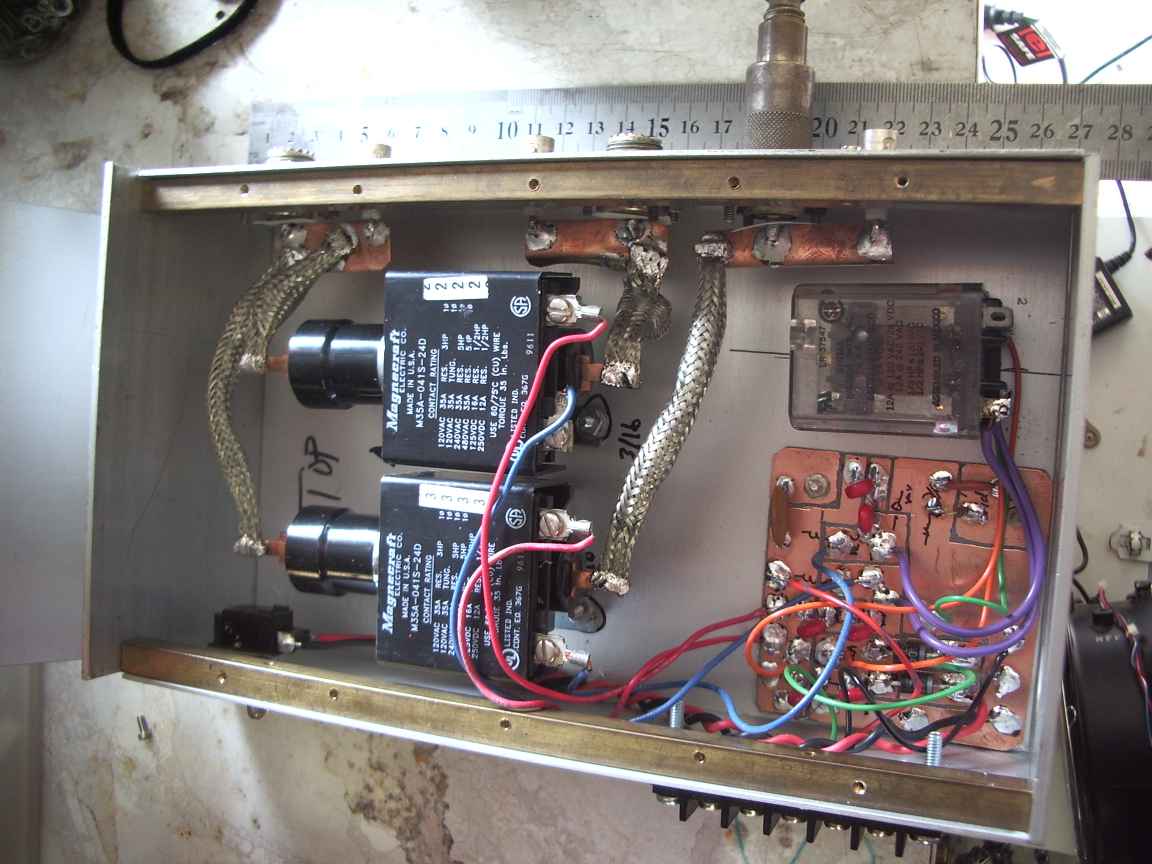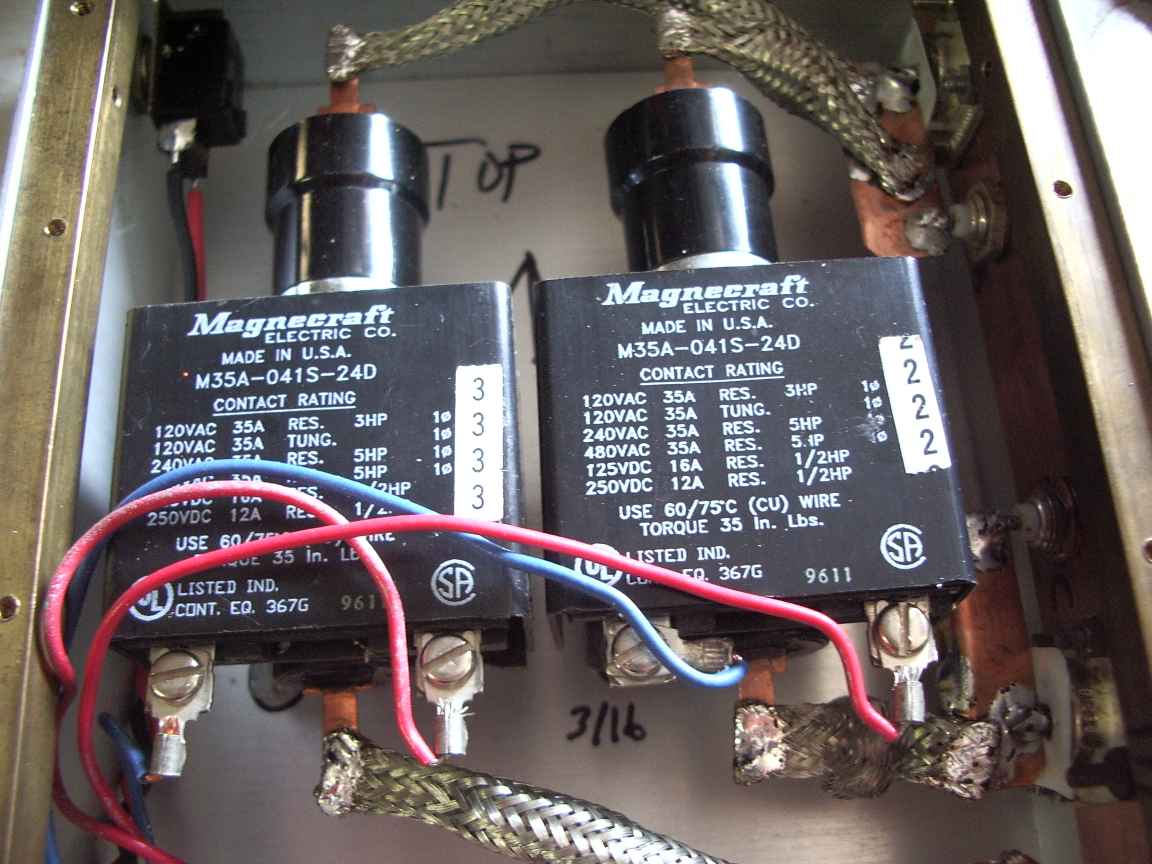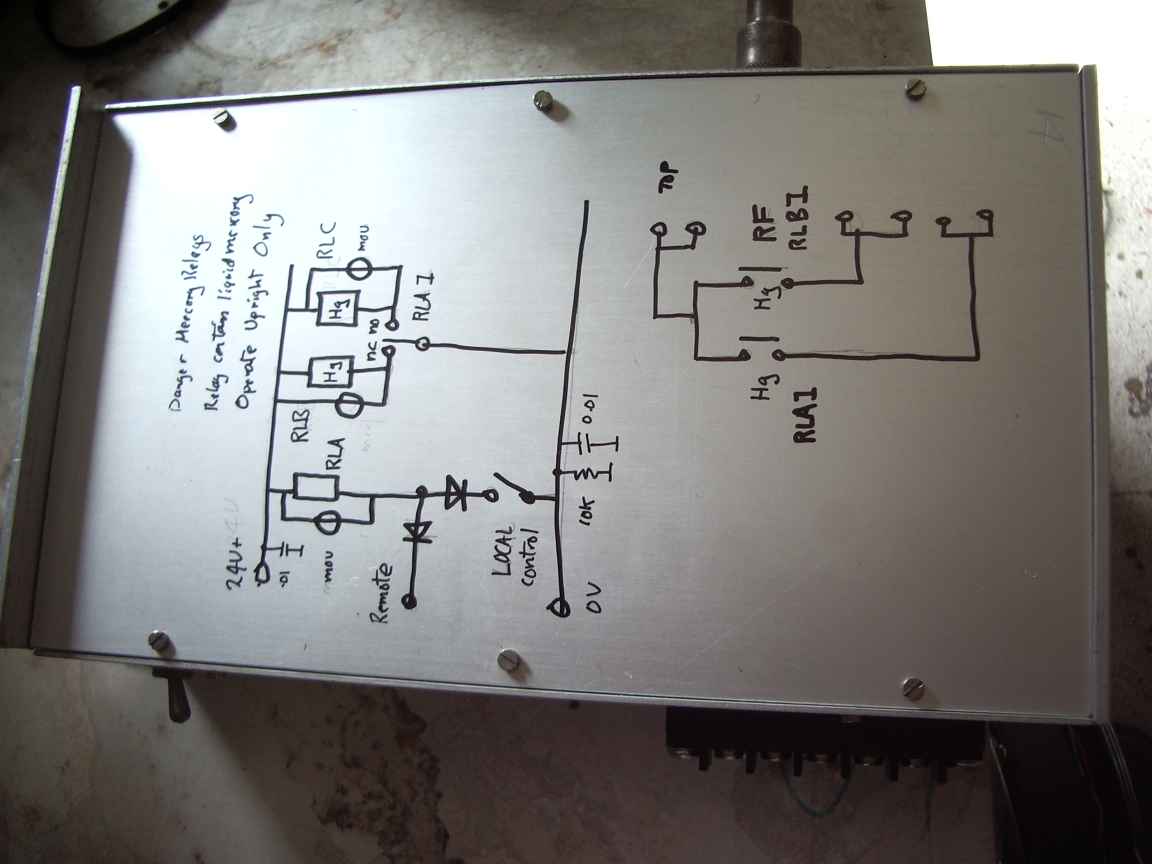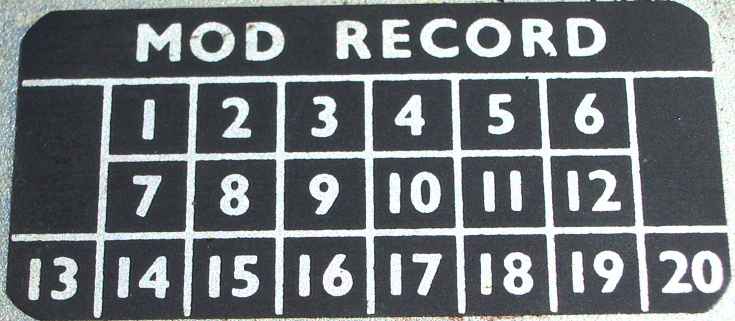A very low loss, high reliability transmit recieve relay for HF using Mercury contactors.
abstract. a design of a low insertion loss RF TR relay is demonstrated using high current Mercury relays.
This
little project was inspired by the accidental discovery of some unusual
looking components inside a discarded high power lighting controller.
The controller was used to switch power to a bank of flourescent
lighting fixtures for a large lecture theatre complex. Each switch
circuit might have been switching over one hundred 100W flourescent
lighting fixtures. These nasty inductive loads would have made
short work of a standard relay and probably even a conservatively rated
large TRIAC would not have withstood many on off cycles. This
particular controller used Mercury filled relays of a type I had never
encountered before.
Each relay consists of a reservoir of
Mercury metal ( nearly 40cc !), an iron float, an electromagnet and a
hermetically sealed chamber containing the Mercury, electrodes and iron
plunger. When the coil is energised, this pulls the iron plunger
into the Mercury pool, which displaced rises up the chamber to make
contact with the top electrode. This works because Iron floats on
Mercury and is also one of the few metals that Mercury will not
dissolve.
This makes for almost the "perfect" relay. There
is no possiblity of contact chatter, a true metal to metal contact is
made of miniscule contact resistance and no possibility of the contacts
welding to each other as a result of overload or arc flash during
opening. In fact the arc flash will help to break the contact as
vapouring Mercury thrusts the liquid away from the flashing electrode.
Compared with convential relays and contactors, the size per equivalent
rating is very small. There is no prospect of the contact
becoming RF rectifying.
There are downsides to these relays, a
few that come to mind are that it depends on the action of gravity, so
orientation is critical. Mercury is a potent poison, poses
significant disposal problems and in extreme cold weather can
freeze. (Not a problem for me here in Oz) . The other problem is
that it is not possible to make a set of changeover contacts, unlike a
conventional relay.
The
design of RF relays poses some problems, the main one being the
minimization of stray inductance. The Contact material should be Gold
or Platinum or Rhodium. Silver is the next compromise !
None of these are real options in the commercial world for
obvious reasons. Silver is not such a good choice, despite the
minimum bulk resistivity contact corrosion is a problem. Not so bad for
DC or power AC applications but no good for RF. Commercial power
contactors use proprietary alloys consisting of a sintered tablet of
silver oxide and other metals. The appeal of a true metallic contact
for RF is compelling and a mercury contactor is the answere.
In
this design the changeover is implemented, as per the circuit, by a
conventional relay which alternatively activates either relay. A
good feature ( or mis-feature depending on point of view ) of this
design is when totally deactivated, the antenna is disconnected by
default, a good state of affairs for radio hams.
 |  |  |
| heavy copper and braid throughout RF path | I put the drawing on the case to remind me of my folly in 20 years time! |
This
simple design features both PL259 and BNC conntectors for all
input output connections, heavy RG8 braid used for all internal RF
current paths. A true copper groundplane for the IO connectors ensures
minimum insertion loss. There is a toggle switch for local control.
The little red things are metal oxide varistors, I prefer to use
these across relay coils because they are insensitve to polarity and
permit more rapid coil deactivation. These MOVs fire at about 32V
so I put two in series to ensure compatibility with a 24VDC system. The
little PCB was made with the dremel method. When soldering to
the relay terminals it is essential to put a heat sink where the
terminal meets the hermetic seal. You really dont want the Mercury to
leak out!
Allthough I am much enamoured of my TR relay, I would
discourage reproduction due to the extreme cost of the relays. Mine
were free, thats the only and true reason for their use!
The
reason for bringing all the contacts to one side, rather than a
symetrical layout was cable dressing issues in my shack. This
relay has to be bolted to the wall and RG8 is a pain !
otherwise, in an ideal world, the layout should be symmetrical.

created page Wed Feb 3 19:05:38 EST 2010








